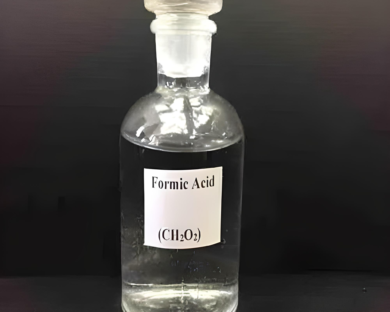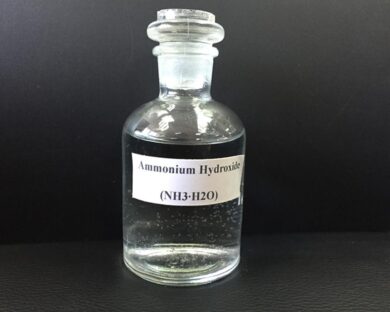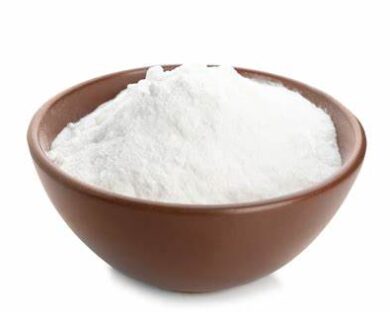Succinic Acid
What is Succinic Acid
Succinic acid's name was derived from the Latin word succinum (means amber), with the chemical formula (CH2)2(CO2H) 2. It is a di-carboxylic acid, but most of the mono- and di-carboxylic acid is not harmful, but it can cause irritation to the skin and eyes. Succinic acid is a white, odorless crystalline powder and remains solid at room temperature. In an aqueous solution, it ionizes rapidly and produces a conjugate base.
For manufacturing succinic acid, some common industrial routes are available. These routes include hydrogenation of maleic acid, oxidation of 1,4-butanediol, or carbonylation of ethylene glycol. Before these methods, succinic acid was used to obtained amber by distillation and known as its spirit. Butane (obtained from maleic anhydride) use to prepare succinic acid. The annual production of succinic acid is approx. 16000-30000 tons globally. In the modern era, methods are recognized for succinic acid production by fermentation of glucose.
Succinic acid has a wide range of applications in the food and beverage industry. Succinic acid is a pH regulator. Dye making, perfumes, lacquers, resin, and coating use succinic acid as an intermediate. Manufacturing photographic chemicals, plasticizers, metal treatment chemicals, and as well as in medicine for making sedatives, antispasmers, cancer-curing, anchors use succinic acid. It is proved safe by U.S Food and Drug Administration. It is a precursor to some alkyd resins and polyesters. Synthesizing 1, 4-butanediol needs succinic acid. Succinic acid serves as a base for several polymers and has also used in many metabolic reactions in bodies. As succinic acid is a non-hygroscopic, many foods use it as an acidulant to build taste. It plays a vital role in rubber, petrochemical process, lubricants, and clothes fibers production.
Succinic acid is a weak acid and safe to use, but ingestion and inhalation can cause skin and eyes irritation, nausea, vomiting, and diarrhea.
USES AND APPLICATIONS FOR Succinic Acid
INDUSTRIES
It is used in numerous industrial applications like:-
- Precursor to polymers
- Resins
- Used as a solvent
- Food additive
- Diet supplement
- Acidity regulator.
… and many more.
Details of SNDB Chemicals Succinic Acid can be found below:-
Succinic acid, a dicarboxylic acid with the chemical formula (CH2)2(CO2H)2, has emerged as a powerhouse in various industries owing to its versatile properties and environmentally friendly nature. Derived from bio-based feedstocks such as corn, sugarcane, and lignocellulosic biomass, succinic acid offers a sustainable alternative to petroleum-based chemicals. Let’s delve deeper into the myriad applications and benefits of succinic acid across different sectors.
Industrial Applications:
- Chemical Industry: Succinic acid serves as a precursor to various chemicals like 1,4-butanediol, tetrahydrofuran, and γ-butyrolactone. These chemicals find extensive use in manufacturing polymers, resins, solvents, and pharmaceuticals. With increasing environmental concerns, the chemical industry is shifting towards sustainable practices, making it an attractive option due to its renewable sourcing and eco-friendly profile.
- Pharmaceuticals: Succinic acid plays a crucial role in pharmaceutical formulations as an excipient, buffering agent, and intermediate in synthesis. Its compatibility with biological systems and low toxicity make it ideal for drug delivery systems, oral medications, and parenteral solutions. Furthermore, succinic acid derivatives exhibit potential therapeutic properties, including anti-inflammatory and antioxidant effects, opening avenues for novel drug development.
- Food and Beverage: As a food additive, succinic acid finds application as an acidity regulator, flavor enhancer, and fermentation substrate. Its GRAS (Generally Recognized as Safe) status makes it suitable for various food products, such as beverages, bakery items, confectionery, and dairy products. Additionally, it contributes to the development of biodegradable food packaging materials, aligning with the growing demand for sustainable packaging solutions.
- Cosmetics and Personal Care: Succinic acid’s multifunctional properties make it a valuable ingredient in cosmetics and personal care products. It acts as a pH adjuster, sebum regulator, and moisturizing agent in skincare formulations, offering benefits like acne treatment and skin hydration. Moreover, it derivatives exhibit antimicrobial activity, extending their application to oral care products, deodorants, and hair care formulations.
Environmental Impact: The utilization of succinic acid presents significant environmental advantages compared to traditional petrochemicals. By leveraging renewable feedstocks and employing bio-based production processes, succinic acid contributes to reducing carbon emissions and dependence on fossil fuels. Furthermore, its biodegradability and non-toxic nature mitigate environmental pollution, aligning with sustainable development goals and regulatory requirements.
Future Prospects: As industries strive towards sustainability and circular economy principles, they are poised to witness continued growth and adoption. Ongoing research and technological advancements aim to enhance production efficiency, optimize downstream processes, and expand the scope of applications. Additionally, collaborative efforts between academia, industry, and governments are crucial for scaling up production capacities and overcoming regulatory challenges.
Contact us for Details of SNDB Chemicals.




